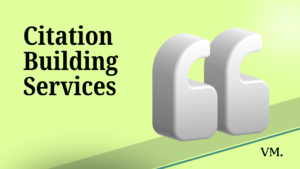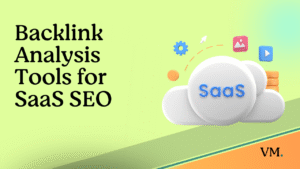Let’s learn about E-E-A-T signals in AI-generated content.
The rapid adoption of AI writing tools has revolutionized content creation, but it’s also raised new challenges for demonstrating quality, credibility, and trust. Google’s E-E-A-T framework- Experience, Expertise, Authoritativeness, and Trustworthiness- has become essential for ensuring that both human- and AI-generated content meets the high standards required for strong search visibility and user engagement. Here’s how to effectively embed E-E-A-T signals in your AI-generated content.
Understanding E-E-A-T in the Age of AI
Google’s E-E-A-T guidelines are now central to how content is evaluated for search rankings. Rather than focusing solely on keywords or backlinks, Google’s algorithms and quality raters prioritize content that demonstrates real-world depth, is backed by credible sources, and is presented with ethical responsibility. This is especially crucial for “Your Money or Your Life” (YMYL) topics, where misinformation can have significant consequences.
Enhancing AI Content with E-E-A-T: Step-by-Step
- Treat AI Content as a Draft, Not a Final Product
AI-generated content should be seen as a starting point. Use it to outline or draft your article, then add layers of human insight, fact-checking, and personal experience to meet E-E-A-T standards.
- Add Clear, Honest Disclaimers
Transparency is key. Clearly state which sections were AI-generated, what was edited or fact-checked by humans, and list authoritative references. For example:
“The following article contains some AI-generated content, indicated in italics. A human writer has edited and verified the information in the AI-written content by comparing it to authoritative sources, which are listed at the end of this page.”
This builds trust with readers and search engines by showing ethical responsibility.
- Showcase Experience
- Integrate firsthand accounts, case studies, or user stories.
- Summarize real user reviews or community discussions using AI, then add commentary or context from a human expert.
- For product reviews or industry insights, highlight personal experience or direct engagement with the subject matter.
- Demonstrate Expertise
- Cover topics comprehensively, addressing all relevant aspects, edge cases, and user questions.
- Include actionable details, step-by-step guides, and practical examples.
- Cite authoritative sources: academic studies, industry reports, and recognized experts.
- Display author credentials prominently (bios, certifications, professional profiles, and notable achievements).
- Ensure technical accuracy and use appropriate industry terminology, making complex concepts accessible.
- Build Authoritativeness
- Associate content with established brands or recognized experts. If AI-generated, ensure it’s reviewed and published under the supervision of a credible authority.
- Link to reputable sources and include endorsements or references from trustworthy organizations.
- Highlight any original reporting, interviews, or unique research.
- Establish Trustworthiness
- Maintain transparency about the content creation process and AI involvement.
- Regularly audit and update content to ensure ongoing accuracy and relevance.
- Provide secure browsing (HTTPS), clear privacy policies, and visible contact information.
- Encourage positive user engagement and feedback to demonstrate reliability over time.
Practical Tools and Workflows
- Use AI to organize and summarize large volumes of user-generated content, then add human analysis for depth.
- Employ editorial workflows where human experts review and approve AI-generated drafts, especially for sensitive or technical topics.
- Utilize AI for grammar, citation, and SEO optimization, but always pair with human oversight for nuance and accuracy.
| Tool/Strategy | Use Case | E-E-A-T Impact |
|---|---|---|
| ChatGPT-4/Gemini | Drafting, SEO optimization | Speed + human editing |
| Murf.ai | AI-narrated videos | Enhanced user experience |
| Content Studio | Automated E-E-A-T audits | Consistency + compliance |
| Connectively (HARO) | Sourcing expert quotes | Authoritativeness |
Statistics
The rise of AI-generated content is reshaping the digital ecosystem at an unprecedented scale. By 2025, experts predict that approximately 90% of all online content will be generated by AI. This staggering figure highlights how deeply AI tools have permeated content creation processes across industries, making it essential to understand the market dynamics and how E-E-A-T (Experience, Expertise, Authoritativeness, Trustworthiness) signals can be effectively integrated into this evolving landscape.
Explosive Market Growth and Adoption
The AI content generation market has witnessed explosive growth in recent years. Valued at around $3.28 billion in 2024, it is projected to surge to $4.84 billion in 2025, representing a compound annual growth rate (CAGR) of 47.9%. Looking further ahead, the market is forecasted to reach nearly $22.91 billion by 2029, maintaining a CAGR of approximately 47.5%. This rapid expansion is driven by several key factors:
- The need for personalized and engaging content that resonates with diverse audiences.
- Increasing demand for multilingual and global content due to globalization.
- Integration of AI tools with existing content management and marketing systems.
- Growing emphasis on cost-effectiveness and accessibility for businesses of all sizes.
AI’s Impact on Content Creation Efficiency
AI tools have dramatically improved the speed and cost-efficiency of content production. According to industry surveys:
- 93% of marketers using AI report that it helps them generate content faster3.
- Businesses leveraging AI report saving over 60% in content production costs and reducing content creation time by 80%.
- Around 51% of marketers use AI tools to optimize content for SEO and email campaigns, while 50% create content directly using AI.
These statistics underscore AI’s role not just as a content generator but as a powerful enabler of marketing efficiency and scalability.
The Necessity of E-E-A-T in AI-Generated Content
With AI dominating content creation, ensuring quality, credibility, and trustworthiness is more critical than ever. Google’s E-E-A-T framework guides how content is evaluated, especially for sensitive “Your Money or Your Life” (YMYL) topics. The proliferation of AI content raises concerns about authenticity and expertise, making the integration of E-E-A-T signals essential to:
- Demonstrate real-world experience by incorporating user insights, case studies, and firsthand accounts.
- Showcase expertise through authoritative citations, expert reviews, and author credentials.
- Build authoritativeness by associating content with recognized brands and credible sources.
- Establish trustworthiness via transparency about AI involvement, regular content updates, and secure website practices.
Industry Adoption and Investment
Tech giants are investing heavily in AI development, with an estimated $320 billion allocated in 2025 alone to maintain leadership in AI innovation. This investment fuels advancements in generative AI models like ChatGPT, DALL·E, and others that produce high-quality text, images, and multimedia content, further accelerating AI’s role in content ecosystems.
Summary
| Statistic/Trend | Value/Insight | Source(s) |
|---|---|---|
| Percentage of online content AI-generated | 90% by 2025 | Source |
| AI content generation market size (2024) | $3.28 billion | Source |
| AI content generation market size (2025) | $4.84 billion | Source |
| Projected market size (2029) | $22.91 billion | Source |
| CAGR (2024-2029) | ~47.5% | Source |
| Marketers using AI to generate content faster | 93% | Source |
| Cost savings with AI content production | Over 60% | Source |
| Reduction in content creation time | 80% | Source |
| Marketers using AI for SEO and email campaigns | 51% | Source |
| Tech investment in AI development (2025) | $320 billion | Source |
These statistics clearly illustrate the transformative impact of AI on content creation and marketing. However, the success of AI-generated content in gaining user trust and search engine visibility hinges on the deliberate embedding of E-E-A-T signals. As AI-generated content becomes ubiquitous, the strategic integration of experience, expertise, authoritativeness, and trustworthiness will differentiate credible, high-quality content from generic or misleading outputs.
This chapter underscores that while AI tools offer unprecedented scale and efficiency, human oversight and ethical practices remain indispensable to uphold content quality and integrity in the AI-driven digital era.
Wrapup
Embedding E-E-A-T signals in AI-generated content is not about masking the use of AI, but about enhancing it with human insight, transparency, and rigorous quality control. By combining the efficiency of AI with the credibility of human expertise and ethical publishing practices, you can create content that not only meets Google’s evolving standards but also earns the trust and loyalty of your audience
FAQ
E-E-A-T stands for Experience, Expertise, Authoritativeness, and Trustworthiness—the core quality metrics Google uses to evaluate content. The "Experience" component was added in late 2022, emphasizing first-hand knowledge and personal engagement with topics.
While Google has never explicitly penalized AI content, their helpful content updates target content that appears to prioritize search engines over human readers—a common pitfall of poorly implemented AI content strategies.
When content lacks authentic E-E-A-T signals, it typically suffers from:
- Poor engagement metrics (high bounce rates, low time-on-page)
- Limited social shares and backlinks
- Reduced search visibility, especially after algorithm updates
- Diminished conversion rates and reader trust
No, Google does not explicitly penalize content solely because it was created with AI assistance. Google evaluates content based on its quality and value to users, not its production method. However, AI content that lacks E-E-A-T signals is more likely to be identified as low value during algorithm updates focused on helpful content.
While Google hasn't made this a requirement, transparency builds trust with your audience. A thoughtful disclosure about your human-AI collaborative process can actually enhance credibility. The key is ensuring your disclosure emphasizes the human expertise and verification involved.
There's no perfect ratio, as it depends on your industry, audience, and content goals. The better question is: how can you structure your workflow to leverage AI efficiency while ensuring human expertise shapes the substance? Focus on creating a process where AI handles repetitive tasks while humans contribute unique insights, examples, and verification.
YMYL topics have the highest E-E-A-T requirements because they can impact people's health, finances, or safety. AI can assist with YMYL content, but these topics require extensive human expert involvement, fact-checking, and credibility signals. Success depends on having genuine expertise and making that expertise evident throughout the content.
If you lack direct experience, be transparent about it while leveraging other strengths. Consider:
- Interviewing subject matter experts and featuring their experiences prominently
- Conducting original research or surveys to generate new insights
- Clearly explaining your research methodology and sources
- Creating a collaborative piece that brings together multiple experienced voices
While Google doesn't publicly rank E-E-A-T factors, evidence suggests these carry significant weight:
- Author expertise (credentials, background, body of work)
- Content accuracy and comprehensiveness
- Citation of authoritative sources
- Website technical trustworthiness (security, transparency, accessibility)
- Independent recognition (backlinks, mentions, reviews from respected sources)
E-E-A-T isn't static—especially in rapidly evolving fields. Establish a regular audit schedule based on your industry's pace of change: quarterly for fast-moving tech topics, semi-annually for more stable subjects. Each update should refresh statistics, add new examples, and incorporate recent developments.
It's often more efficient to enhance existing content rather than starting over. Audit your content for E-E-A-T weaknesses, then strategically add experience markers, expert insights, updated research, and original examples. Even previously thin content can be transformed into valuable resources through thoughtful enhancement.
AI is most effective as an amplifier of your existing expertise, not a replacement for it. Use AI to:
- Scale the distribution of knowledge you already possess
- Identify content opportunities and knowledge gaps
- Generate initial drafts based on expert-created outlines
- Ensure consistency across large content libraries
- Assist with research and organization of information
Focus on quality over quantity. It's better to produce fewer pieces with strong E-E-A-T signals than many pieces with weak signals. Consider:
- Creating a thought leadership cornerstone piece monthly rather than multiple thin blog posts weekly
- Developing a systematic process for documenting team experiences and insights
- Building relationships with industry experts for collaborative content
- Leveraging user-generated content from your community, properly vetted and contextualized



